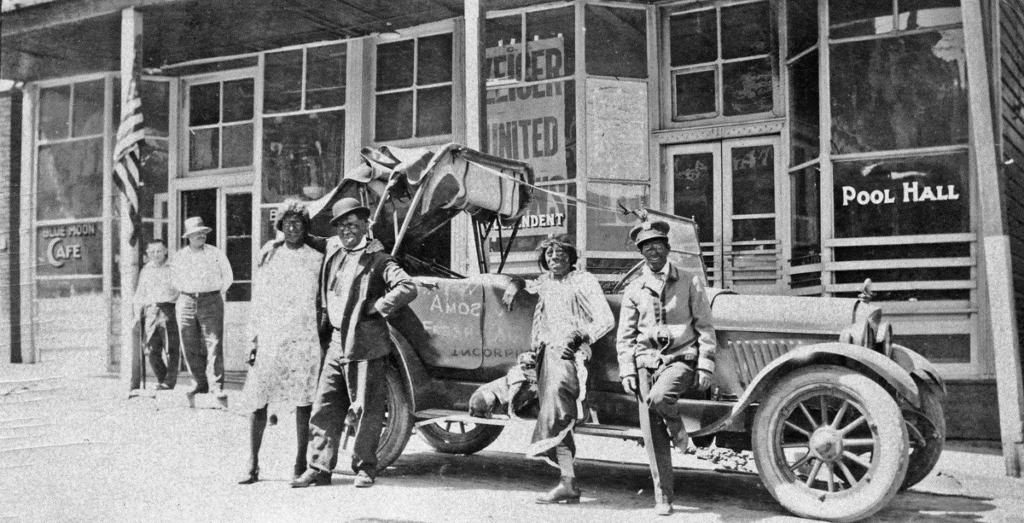Last week, we discussed minstrelsy in Park City and established how its use of blackface makeup and other stereotypes have negatively impacted white people’s and American society’s perceptions of black people.
While blackface makeup had its origins in the theater, and was especially popular in American minstrelsy, its use, along with those other stereotypes, soon navigated to other areas of American social life. One of the most prominent examples was in the 1920s to 1940s American radio show Amos n’ Andy. While other, more minstrel-like radio sitcoms played around the same time, Amos n’ Andy gained popularity because both black and white audiences could, at different times, identify themselves with the characters or the situations said characters found themselves in.
Despite this integrated popularity, the show was still chock-full of the familiar minstrel stereotypes. A New York Times book review of The Adventures of Amos ‘N’ Andy: A Social History of an American Phenomenon by historian Melvin Patrick Ely noted “Amos was unquestionably dense and naïve…. And Andy [was as] lazy, conniving and pretentious as minstrelsy’s venal Jim Dandy.” The characters were also voiced by two white men using exaggerated accents and dialect to sound black – vocal blackface, in a way – different from the cultural appropriation of Black Vernacular English we see today.
And while Amos and Andy were radio characters, that did not stop people from using the characters in costumes. In Park City, two men donned blackface and presented themselves as Amos and Andy for the 1929 July Fourth parade. They and their girlfriends, also in blackface, rode in the parade and later entertained Parkites on Main Street.

Credit: Park City Historical Society & Museum, Wilma Larremore Collection
This type of blackface performance or costuming has permeated American society since the decline in popularity of minstrelsy. According to the National Museum of African American History and Culture, “Blackface and the codifying of blackness— language, movement, deportment, and character—as caricature persists through mass media and in public performances today. In addition to the increased popularity of “black” Halloween costumes, colleges and universities across the country continue to battle against student and professor blackface performances.”
Traditionally, Halloween costumes consisted of ghosts, goblins, witches, spirits, and monsters as a way of mocking evil creatures on All Hallows Eve (the night before All Saints Day), which was derived from a combination of Christianity and ancient Celtic rituals marking the New Year after harvest. Not until after the turn of the century, in conjunction with the popularity of minstrelsy, did people costume themselves as someone of another race to mock or make light of a different race or culture. Black caricatures proved popular, along with brownface for Indians and Mexicans, redface or yellowface for Native Americans and Asians, and the use of cultural garb to round out the costumes.
Outside of Halloween, these costumes have persisted in other costume parties, performances, events, and parades. The Museum’s own photographic collections prove as much in Park City, where racist or appropriated costumes appear through the early 2000s for Halloween, parties, parades, and events like Clown Day.
These costumes are wrong, not only because of the negative stereotypes they are based on, but because of cultural insensitivity and appropriation as well. Still popular today are costumes like “Sexy Native American” or “Dastardly Mexican.” Aside from any stereotypes, these costumes are also sometimes based on sacred cultural regalia of different peoples – regalia used for religious or cultural ceremonies or celebrations, not trick-or-treating. As well, such costumes “depict… people as a monolith frozen in time,” according to Ho-Chunk, Hopi and Rappahannock artist and performer Henu Josephine Tarrant. And on top of locking existing peoples into that past image, those costumes are often based on clothes worn in historically violent periods in U.S. history as white settlers conquered the west and southwest, murdering and/or removing Native peoples.
While most people claim to not have realized their costumes were insensitive or racist, the historical ties to minstrelsy and the origin of most costumes as mockery have never been hidden, and ignorance is not an excuse for absolution. However, you should not hide documentation of your past costumes. Rather, acknowledge the mistake and learn from the experience.
The Park City Museum is hosting a lecture on Halloween history on Monday, October 25 from 5 to 6 p.m. The lecture is available in person and virtually. RSVP here.